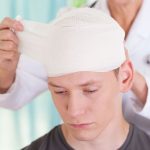
Nearly 8 million Baby Shark and Mini Baby Shark bath toys have been recalled because they can cause serious injuries to children. When using these bath toys, particularly in a bathtub or wading pool, a child can sit, slip or fall onto the shark’s hard plastic top fin, posing risks of impalement, lacerations and puncture wounds, according to the company, Zuru. This recall includes both full-size Robo Alive Junior Baby Shark Sing & Swim bath toys and Mini Baby Shark Swimming bath toys. The toys were sold at Walmart, CVS Pharmacy, Dollar General Corp., Family Dollar Services, HEB Grocery Company, Meijer, Target, TJX Companies, Ross and Walgreens stores nationwide and online at Walmart, Target, Amazon and other websites. The full-size toys have tracking information on the bottom, including raised lettering with the model number #25282 and a date code beginning with the letters DG followed by “YYYY/MM/DD” in the date range DG20190501 through DG20220619. Only full-size Baby Shark toys with a hard plastic top fin are included in this recall. The mini-size bath toys also have tracking labels on the bottom, including raised lettering with model numbers #7163, #7175, #7166, or #25291 and a date code beginning with the letters DG followed by YYYY/MM/DD in the date range DG2020615 through DG2023525. Zuru knows of 12 reports of children falling or sitting onto the recalled full-size… read on > read on >


















